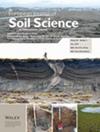Soil Multifunctionality Responses to Warming and Nitrogen Addition and the Mediating Bacteria Vary by Biocrust Type
Abstract
Climate warming and nitrogen deposition—two key drivers of global change—significantly influence soil multifunctionality and microbial community dynamics. Biocrusts are crucial in mitigating these impacts and supporting soil ecological functions and biodiversity. However, how soil multifunctionality and microbial communities within different biocrusts respond to these drivers—and the mechanisms involved—remains unclear. This study explores the effects of warming and nitrogen addition on soil multifunctionality and bacterial communities in cyanobacterial and moss crusts in the Mu Us Sandland. Using Partial Least Squares Structural Equation Modelling, we identified the pathways through which these global change factors influence soil multifunctionality. Our results show that warming and nitrogen addition exert significant yet contrasting effects on soil multifunctionality and bacterial community structure, varying markedly between biocrust types. Specifically, warming enhanced soil multifunctionality in moss crusts but reduced it in cyanobacterial crusts. Combined warming and nitrogen addition significantly decreased bacterial alpha diversity in moss crusts, while cyanobacterial crusts were relatively unresponsive. Moreover, key bacterial phyla—particularly Proteobacteria and Bacteroidetes—mediated the effects of warming and nitrogen addition through changes in their relative abundances, exerting negative and positive influences on multifunctionality in cyanobacterial and moss crusts, respectively. This study underscores the capacity of moss crusts to maintain soil multifunctionality under global change conditions and reveals a key mechanism by which shifts in dominant bacterial phyla mediate biocrust responses to environmental stressors.





 求助内容:
求助内容: 应助结果提醒方式:
应助结果提醒方式:


